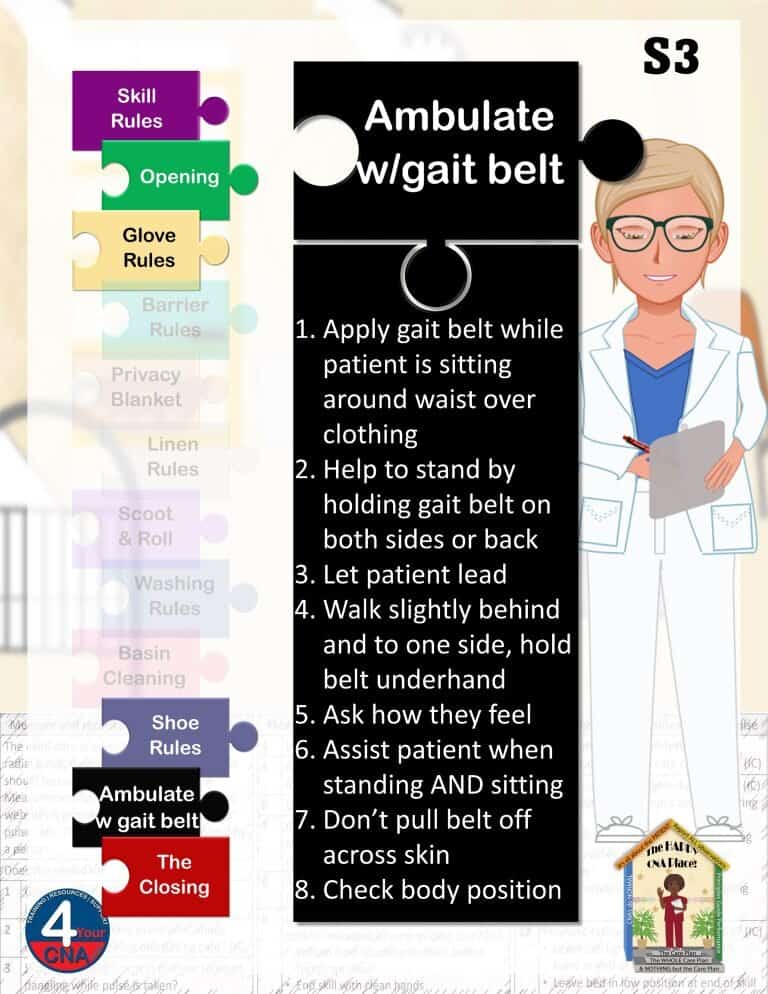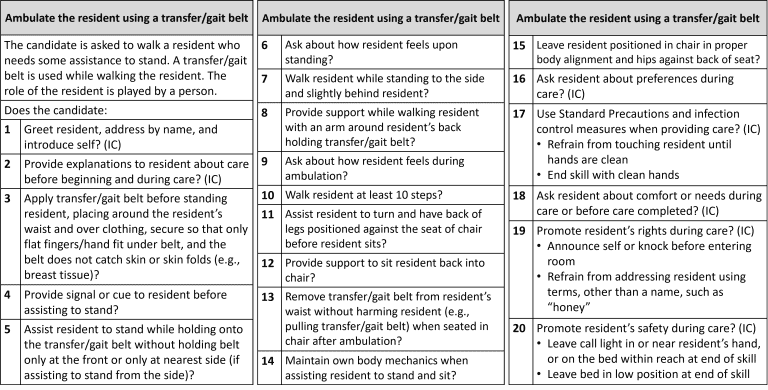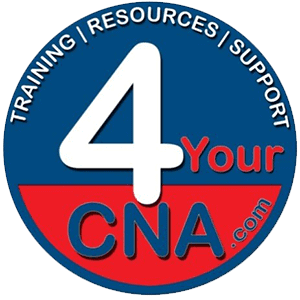Ambulating a Resident with a Gait Belt
Ambulating a patient using a gait belt is a fundamental skill for CNAs and other healthcare providers. It ensures safe and effective mobility support, helping prevent falls and injuries. Many Residents—especially those who are weak, elderly, or recovering from surgery—rely on assistance during walking. Correct use of a gait belt not only promotes independence but also reduces caregiver strain and enhances overall Resident confidence. Mastering this skill is critical for maintaining safety standards and boosting mobility outcomes in medical settings.
You will need the following to Ambulate a Resident with a Gait Belt:
- Non-Skid Footwear
- Gait Belt
1. Preparation & Hand Hygiene
- Read and follow the Care Plan, the whole Care Plan, and nothing but the Care Plan.
- Knock and announce yourself before entering.
- Greet the Resident by name and introduce yourself.
- Explain the task to the Resident and ensure their comfort and consent.
- Close the Privacy Curtain
- Wash your hands thoroughly before beginning.
- Assess Glove Rules (Are Gloves required for this Resident?)
- Gather your Supplies.
2. Positioning the Resident
- Ensure Resident is sitting properly in the chair:
- Resident sitting up straight.
- feet together, flat on the floor,
- hips against the back of the chair.
- Ensure Resident is wearing Skid-resistant shoes.
- Ensure a clear walkway free of obstructions or obstacles.
3. Applying the Gait Belt
- Extend Gait belt, wrapping it around Residents waist.
- Asking Resident to raise their arms can assist in placement of the Gait Belt.
- Secure the Gait belt around Resident, passing the tail end of the belt through the buckle to secure the Gait Belt.
- Ensure Gait Belt has space for 4 fingers to fit snugly between it and the Resident.
- Tuck the tail end of Gait Belt behind the Gait Belt to secure it.
4. Proper Body Mechanics & Standing the Resident
- Stand in front of and to the side of the Resident
- Place one foot sideways in front of Resident’s Feet, this prevents their feet from sliding out.
- Place the other foot to the Resident’s Side, ensuring Stability as you life the Resident.
- Ask Resident to place their hands on your shoulders.
- Reaching around Resident, grab Gait Belt with both hands behind Resident’s back.
- Count down out loud with Resident before standing.
- Bend and lift with your knees.
- Once Standing, make sure Resident is not dizzy, or feeling weak.
5. Walking the Resident
- Grip Gait Belt in the square of Resident’s back.
- Once Resident is ready, allow Resident to begin walking.
- Follow slightly behind, and to the side.
- Follow at Resident’s pace, do not rush Resident.
- Ask Resident about feelings or discomfort during their walk.
- Walk Resident 5 Feet (halfway point as dictated by Care Plan. Resident is to be walked 10 total feet), allow Resident to turn around at their pace.
- Walk Resident back to the chair, having them stop in front of chair.
6. Seating the Resident
- Position Resident directly in front of chair
- Ask Resident to face away from the chair.
- Ask Resident to notify you once they feel the chair on the back of their legs to ensure safety as they sit.
- Assist Resident the same way you assisted in standing.
- Ask Resident to place Hands on your shoulders
- Stand in front of and to the side of the Resident
- Countdown for the Resident to sit down, supporting Resident using the Gait Belt as they sit.
- Remove Gait Belt
- Be careful not to drag Gait Belt aross Resident’s skin
7. Address Resident Comfort
- Ensure Resident is comfortable.
- Ensure Resident is sitting properly in the chair.
- Feet flat on the floor
- Hips against the back of the chair
- Resident sitting up straight
- Ask about Resident needs and preferences.
- Provide Resident with Call light.
- Close curtain and ensure bed is in lowest position.
8. Closing
- Thoroughly wash your hands.
- Record additional relevant observations
- Thoroughly wash your hands.
- Think about the Steps of your Skill. Make any corrections. Tell the evaluator your Skills is complete.
- Not reading and following the Care Plan, the whole Care Plan, and nothing but the Care Plan.
- Not ensuring Proper Body Mechanics when positioning Resident.
- Not Properly securing Gait Belt on Resident.
- Dragging Gait Belt across Resident’s skin.
- Not properly holding Gait Belt when ambulating Resident.
- Not communicating when you are standing/sitting to Resident
- Not asking Resident about feelings or dizziness throughout.
- Not placing Resident’s Hands on shoulders when standing Resident.
- Not walking correct distance with Resident.
- Forcing abnormal pace for Resident (rushing Resident as they walk)
- Maintaining proper body mechanics throughout skill.
- Not ensuring bed is left in lowest position.
- Not providing Resident with Call Light.


Join our FREE Classroom Livestream on Mondays & Wednesdays from 9am – 1pm (ET) on FLCNATraining.com!

